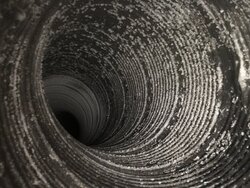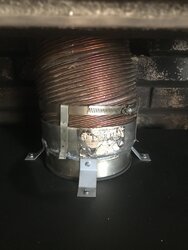Noticed this white coating in my stove tonight. Decided to look up the pipe and found the pipe seemed to be coated with it too. Any ideas or is this normal? Had temps around 550 last night, but nothing concerning happened that I can remember. Brushed right off of the metal in the firebox. Still don’t ever remember seeing white in my old stove or in the pipe before. I will also say that last night was likely the hottest fire I’ve had going consistently in this stove since I got it this year. Idk if that had something to do with it also???
Attachments
Last edited:





